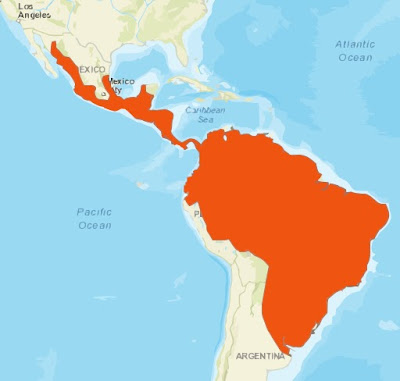Neotropical Otter
(Lontra
longicaudis)
As promised, the posts this week are brief overviews of EACH of the
otter species, focusing on recent information about each species and a
vid or 2...
Neotropical Otters latin name (Lontra longicaudis) means Otter with looong tail!
I hope that you enjoy exploring them!

Unlike most otter species, Neotropical Otters are relatively solitary and are very elusive even in pristine habitats. Male and female Neotropical Otters meet one day a year for breeding, and then go their separate ways. Neotropical Otters prefer clear, fast-flowing water. Habitat destruction and water pollution are major threats to this species.
Status: Near Threatened and Decreasing
Neotropical Otters are found through most of Mexico all the way south to Argentina (except in arid regions). It's habitat range approaches the North American River Otter to the north and the South American River Otter to the south.
This species occurs in it's range from sea level to 4,000 meters (over 13,000 feet altitude).
This species is very shy and elusive,s o getting good videos isn't easy!
A couple of Neotropical Otters together (wild)
Neotropical Otter videos, swimming and grooming (in captivity)
If you want more in-depth reading a few research articles you could explore on these otters includes:
> Trophic ecology and the use of shelters and latrines by the Neotropical otter (Lontra longicaudis) in the Taquari Valley, Southern Brazil, CB Kasper, VAG Bastazini, J Salvi. Iheringia. Série, 2008
O Carvalho-Junior, AB Birolo. IUCN Otter Spec., 2010
> Seasonal and spatial differences in feeding habits of the Neotropical otter Lontra longicaudis (Carnivora: Mustelidae) in a coastal catchment of southeastern. ML Rheingantz, HF Waldemarin, L Rodrigues. Zoologia , 2011> Defining Neotropical otter Lontra longicaudis distribution, conservation priorities and ecological frontiers, ML Rheingantz, JFS de Menezes. Tropical Conservation, 2014


No comments:
Post a Comment